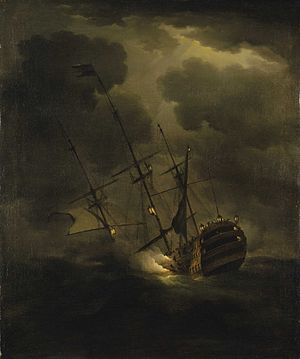
So says George Bass, a nautical archaeologist at Texas A&M University in an excellent article by John Colapinto in the most recent edition of the New Yorker on Odyssey Marine, titled “Secrets of the Deep”.
In May of 2007 the company announced it had discovered a large colonial-era wreck which may perhaps be the largest underwater treasure recovery in history. Before the announcement the company “had transferred the gold to fife hundred and fifty-one plastic buckets, loaded them onto a chartered jet, and flown them to the United States from Gibraltar.” The company has termed the wreck a code name, the Black Swan, and refused to divulge its location. At present, Spain has brought suit in Federal District Court in Tampa, Florida seeking recovery of the coins under the doctrine of sovereign immunity. Presiding over the case is U.S. District Court Judge Mark Pizzo, who incidentally presided over a Securities and Exchange Commission trial of many of the managers of a company called Seahawk for insider trading. The defendants there were acquitted, but went on to found Odyssey Marine.
Under the Foreign Sovereign Immunities Act, of 1976, Spain may be able to claim the coins, so long as the vessel was not engaged in commercial operations. This may lead to the strange issue of Spain and Odyssey Marine arguing over the primary motive of a vessel and her crew which may have sank over two-hundred years ago.
There have been no shortage of critics of Odyssey Marine and its endeavors. UNESCO Director General Koichiro Matsuura strongly condemned the efforts in an editorial in the Miami Herald, and Peru has even stated its ethical claim for the gold.
Greg Stemm is the current CEO of Odyssey Marine, who was acquitted in the earlier SEC prosecution, argues in the New Yorker that “by publicizing the shipwrecks it finds–on TV specials, in books, and on its Web site–the company does more to educate people about our seafaring past than academics do.” As Stemm says “If I were an archeologist today, I’d be saying, ‘Why aren’t we out there working with [them]?”
Colapinto has helpfully solicited the opinions of some archaeologists, and they are not positive. George Bass of Texas A&M says “Finding, raising, and conserving artifacts is no more archeology than my aunt’s careful collecting of Indian arrowheads on her South Carolina farm.” I’m hardly an expert on marine archaeology, but there seems to be a very big gap between Odyssey’s activities and Bass’ efforts in excavating an 11th-century wreck off Turkey. He and the team of researchers spent three decades “piec[ing] together nearly a million fragments of glass retrieved from the wreck. These yielded beakers, cups, bowls, and bottles, and, for the first time, information about medieval Islamic glassware.” Careful excavation of underwater sites can reveal important historical information. The Titanic may not have been sunk by an iceberg, but by cheap rivets (it was this tragic disaster that spawned perhaps the worst movie of the last 20 years).
I find myself becoming more concerned with Odyssey Marine and its methods the more I learn about them. Their purpose in the Black Swan case has been all about the coins, and there are even indications they have manipulated news reports and discoveries to time with selling shares in the company. In this case, the more they know about the wreck, the harder it may be to keep the coins. They do not seem to interested in serious archaeological study, but rather want a kind of superficial appearance of archaeological study to sell more of the objects they find. Odyssey, nor the predecessor company Seahawk has never published any of its research in a peer-reviewed journal. I think there is a lot to criticize about Odyssey’s approach. However I do not think the UK and Spain are entirely blameless either. They have hired the company to search their waters, and it strikes me as a bit odd that Spain has reacted in this way when they had hired Odyssey Marine to search Spanish waters.
The presumption has long been that the salvor will be entitled to a portion of what they find on the ocean because they have risked their equipment, or their lives in some cases to salvage underwater sites. That general position will not change any time soon. The 2001 UNESCO Underwater Heritage Convention takes an aggressive line, and prohibits all commercial exploitation of underwater cultural heritage. This is a step many nations will refuse to take. Only 15 nations have signed on, and the convention requires 20 before it enters into force. In this case, by arguing too vehemently, I think UNESCO has left itself with no say on the disposition of underwater sites found in international waters.
Questions or Comments? Email me at derek.fincham@gmail.com




